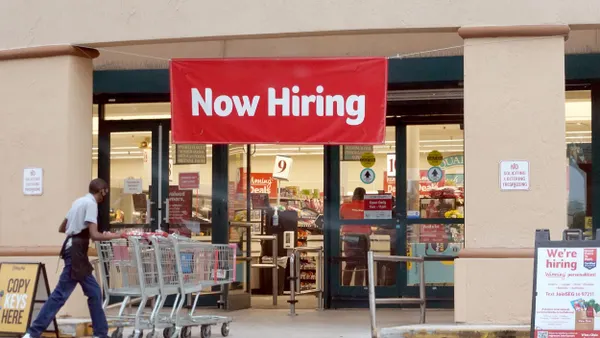Dive Brief:
- Among small businesses (SMBs), growth in hiring independent contractors has surpassed growth in hiring employees, a new Paychex Inc. study found. The growth rate of independent contractors was highest in August 2017 at 11% year-over-year, and although it has since slowed to 5%, it still outpaced the growth rate of employee hiring by SMBs, which has been less than 1% since 2013, said Paychex. SMBs in this case were defined as employers with one to 49 workers.
- The report also found that businesses with one to four employees rely the most on contractors; transportation, trade and utilities rely the most on independent contractors among all industries. Men (51%) are slightly more likely to be contractors than women, but the number of female contractors is increasing, rising 1.5% in the past five years.
- Citing Larry Davenport of MIT Group, Inc. in Oklahoma City, Paychex said Davenport’s company uses IT independent contractors whenever possible because they have the skills and industry experience needed to complete projects. “Our projects are short-term and unless there are follow-on projects using the same skill sets, they (employees) sit on the bench and draw income from the company, which could be better spent elsewhere," Davenport said.
Dive Insight:
In a global Korn Ferry survey released in September, 60% of HR professionals said they're hiring more gig workers, results that echo the Paychex report. The skills shortage appears to have contributed to this increase, allowing recruiters to look beyond employees to meet their staffing needs.
Employers also are seeking to remain agile, able to adjust staffing to meet fluctuations in market — but this will also require some adjustments on HR's part to ensure the department has a keen understanding of who actually works for the company. As more individuals join the gig economy, bringing skills and expertise that are in-demand, employers will have a larger pool of workers to draw from for projects and special assignments.
Still, compliance concerns remain, especially as courts diverge on the definition of "employee" under the Fair Labor Standards Act. For now, experts recommend that employers watch for U.S. Department of Labor clarification and familiarize themselves with any applicable judicial precedent.












